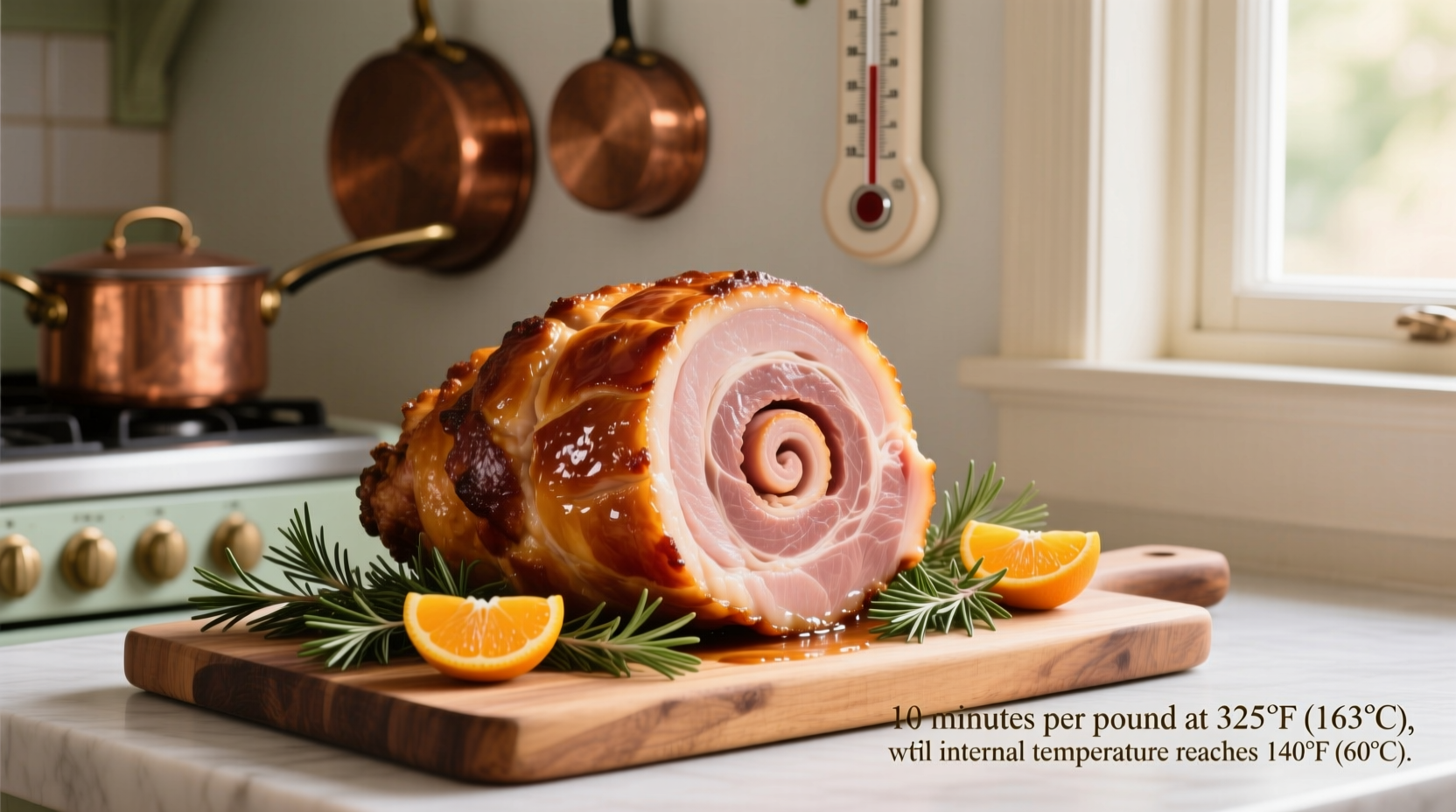Nothing ruins a special occasion meal faster than an overcooked or undercooked ham. Getting the timing right ensures your centerpiece protein stays moist, flavorful, and safe to eat. Whether you're preparing a holiday feast or Sunday dinner, understanding the precise cooking requirements for different ham varieties makes all the difference.
Why Ham Cooking Time Varies
Not all hams cook the same. The timing depends on three critical factors: the ham's preparation status, its size, and whether it contains bone. Most hams sold in grocery stores are pre-cooked through curing, smoking, or baking—meaning they only need reheating. Fresh hams, however, require full cooking like other raw meats.
| Ham Type | Preparation Status | Cooking Time (per pound) | Target Temperature |
|---|---|---|---|
| Pre-cooked, bone-in | Ready to eat (needs reheating) | 15-18 minutes | 140°F |
| Pre-cooked, boneless | Ready to eat (needs reheating) | 18-20 minutes | 140°F |
| Spiral-cut | Ready to eat (needs reheating) | 10-14 minutes | 140°F |
| Fresh | Raw (requires full cooking) | 22-25 minutes | 145°F |
This comparison reflects current USDA Food Safety and Inspection Service guidelines, which specify that pre-cooked hams only require reheating to 140°F while fresh hams must reach 145°F for safety. The USDA's Cooking Meat and Poultry Guide confirms these temperature standards prevent foodborne illness while preserving moisture.
Your Step-by-Step Ham Cooking Timeline
Follow this practical sequence for perfect results every time:
- Prep (15 minutes before cooking): Remove ham from refrigerator, score fat layer in diamond pattern, apply mustard or glaze base
- Initial bake (first 30 minutes): Place in 325°F oven uncovered to allow surface browning
- Main cooking phase: Reduce to 300°F, cover loosely with foil, cook according to weight-based timing
- Glazing (last 30-45 minutes): Remove foil, apply final glaze layer, increase heat to 350°F for caramelization
- Resting (15-20 minutes): Tent with foil after removal from oven—critical for juice redistribution
For a 10-pound pre-cooked bone-in ham, this translates to approximately 2.5 hours total cooking time plus resting. Always insert your thermometer into the thickest part, avoiding bone contact, for accurate readings.

When Standard Guidelines Don't Apply
Certain situations require timing adjustments beyond the standard formula:
- Convection ovens: Reduce cooking time by 25% due to more efficient heat circulation
- Smoker cooking
- Slow cooker method: Requires 4-6 hours on low setting for pre-cooked hams
- High-altitude locations: Add 5-10% more cooking time above 3,000 feet elevation
The FoodSafety.gov team notes that spiral-cut hams cook faster due to increased surface area exposure. Their Cold Food Storage Chart specifically recommends reducing spiral ham cooking time by 25-30% compared to whole hams to prevent drying.
Avoiding Common Ham Cooking Mistakes
Even with proper timing, these pitfalls can ruin your ham:
- Not accounting for carryover cooking: Temperature rises 5-10°F during resting
- Over-glazing too early: Sugar-based glazes burn when applied more than 45 minutes before finish
- Skipping the resting period: Cutting too soon releases precious juices
- Using inaccurate thermometer: Digital probe thermometers are essential for precision
Professional chefs consistently emphasize that visual cues alone can't determine doneness. The National Center for Home Food Preservation confirms that color change isn't a reliable indicator for ham safety—only thermometer verification provides certainty.
Perfect Ham Troubleshooting Guide
Encountering issues? Match your situation to these solutions:
- Dry texture: Baste hourly with apple juice or broth during cooking; never exceed 140°F for pre-cooked hams
- Undercooked center: Return to oven at 275°F for 15-minute increments until proper temperature reached
- Burnt exterior: Next time, cover with double-layer foil and reduce oven temperature by 25°F
- Soggy glaze: Apply final glaze during last 20 minutes at higher temperature (375°F)
Remember that proper storage of leftovers affects future meal quality. The USDA recommends consuming cooked ham within 3-4 days when refrigerated, or freezing for up to 2 months. Always store in airtight containers with some natural juices to maintain moisture.











 浙公网安备
33010002000092号
浙公网安备
33010002000092号 浙B2-20120091-4
浙B2-20120091-4